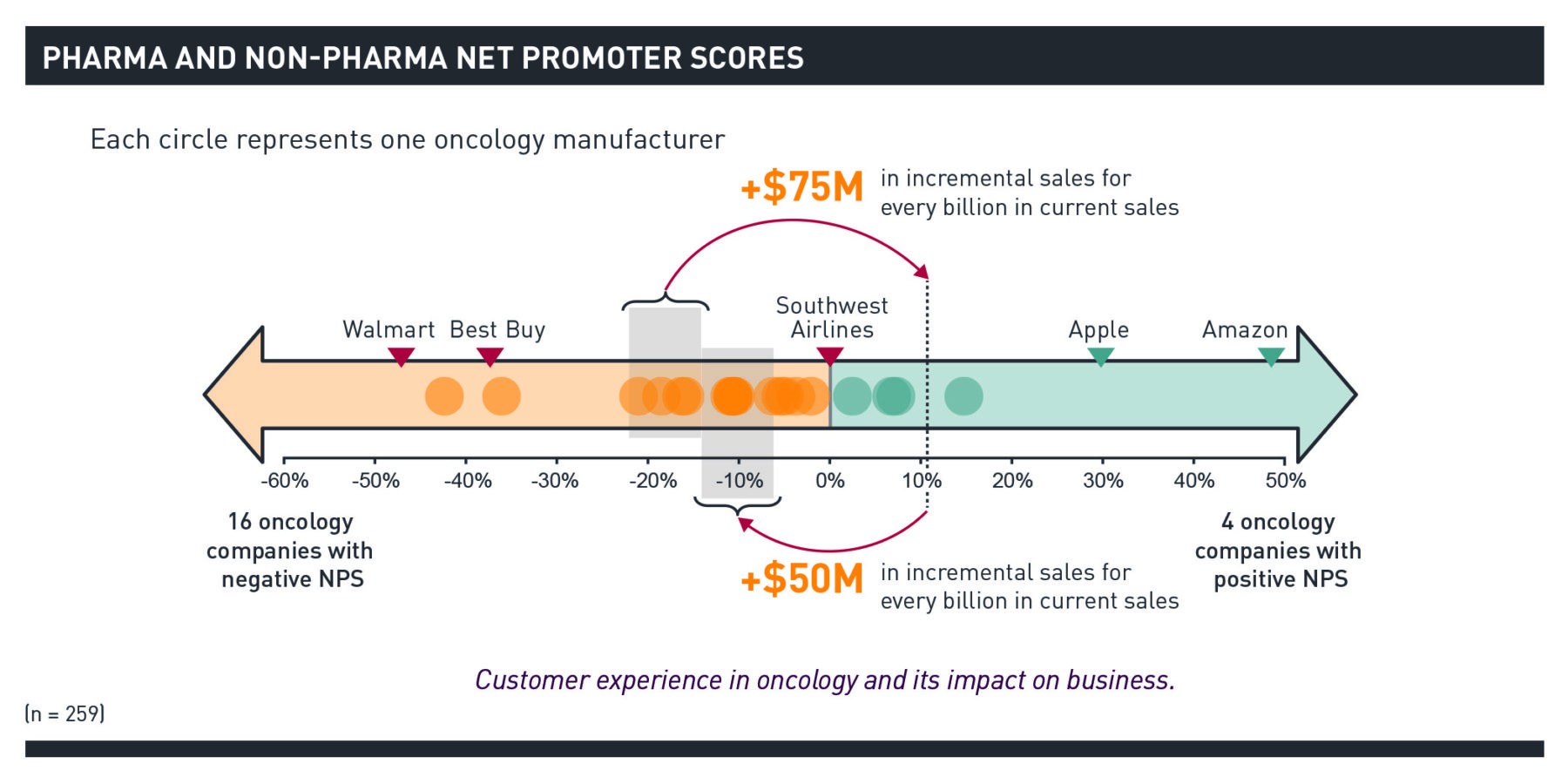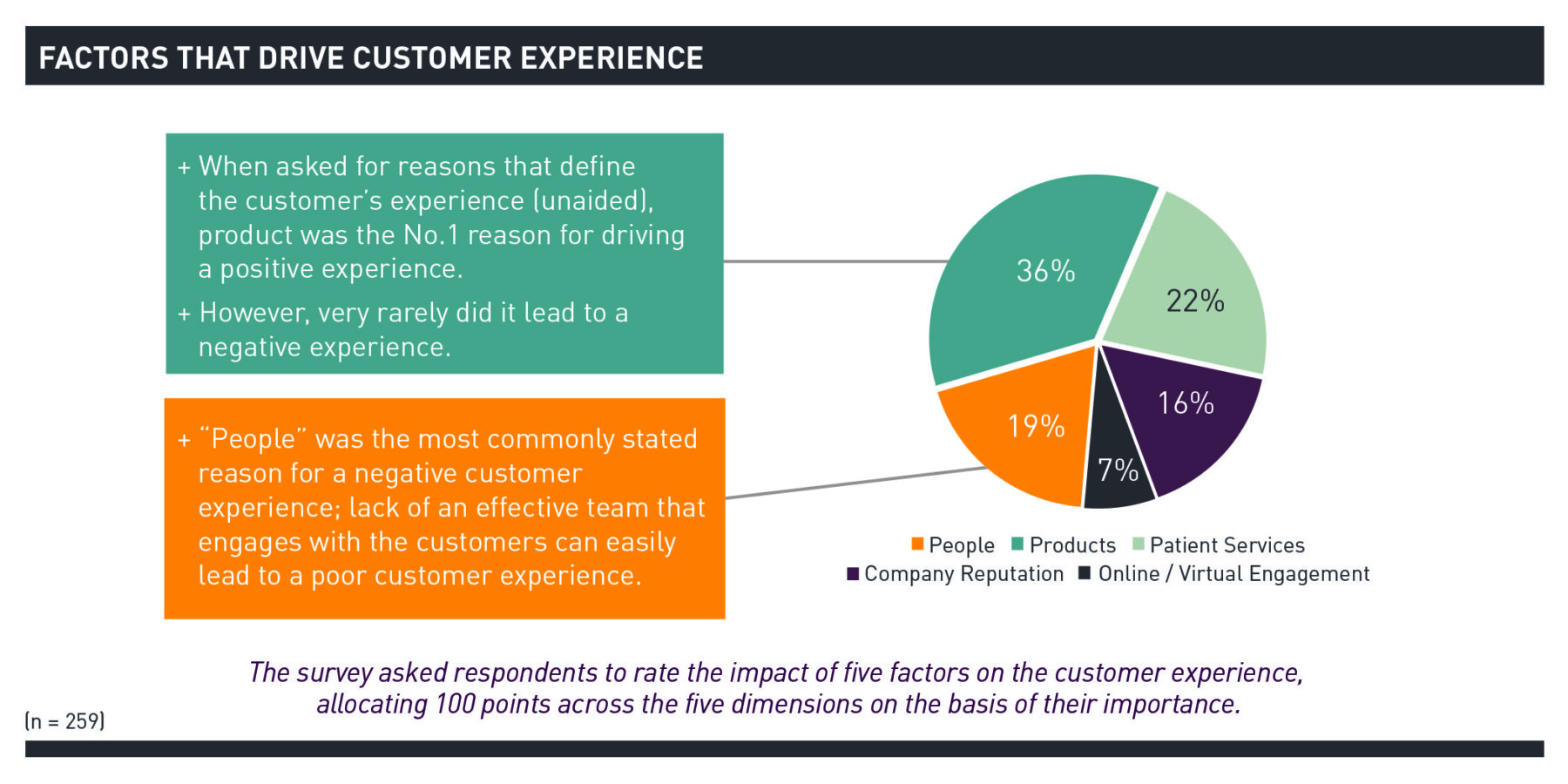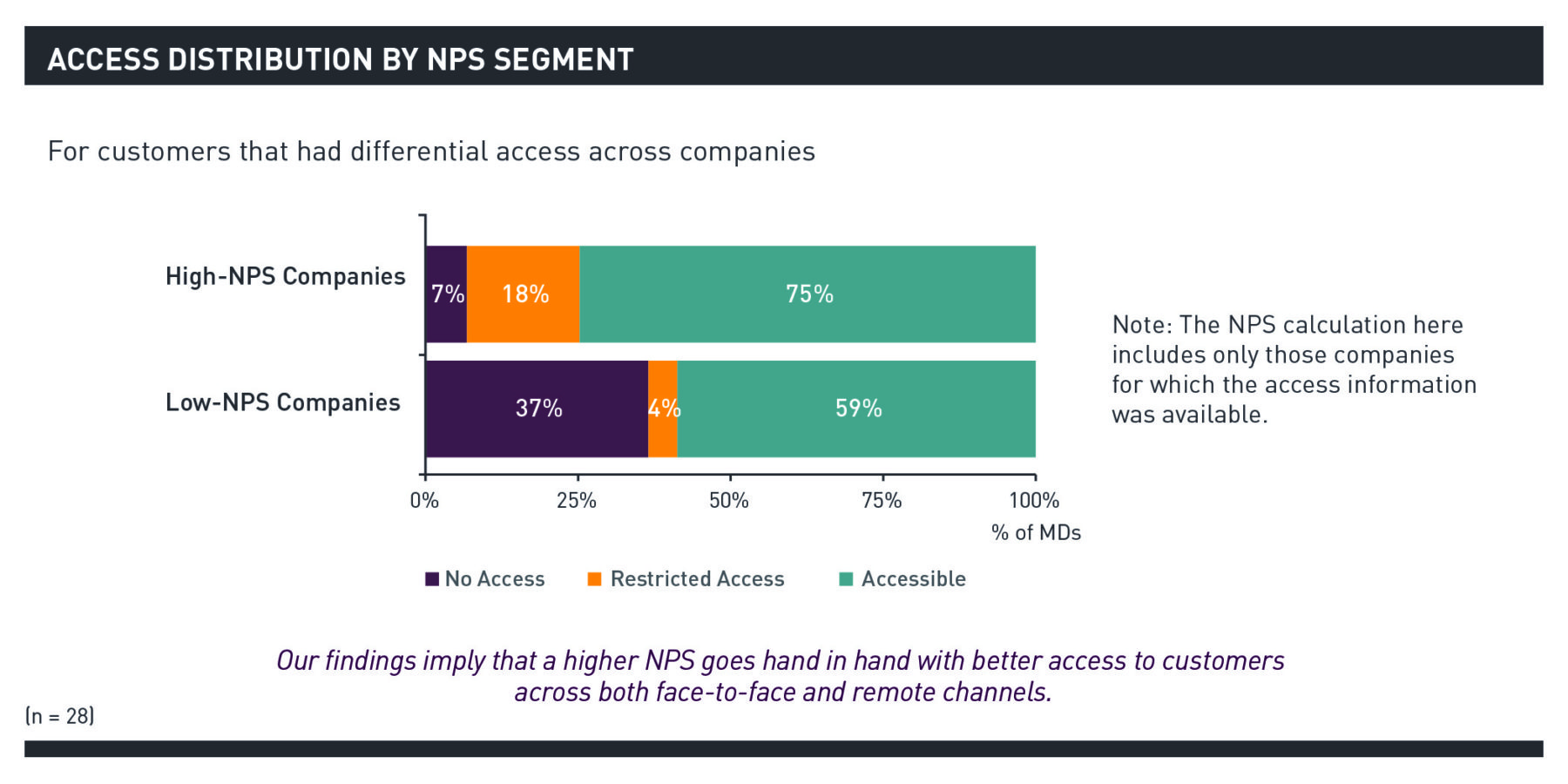The oncology industry lags behind other industries in the customer experience that manufacturers deliver. This sobering news for manufacturers emerged from a recent ZS survey of nearly 260 oncologists, oncology nurses, and administrators about their experiences with 20 of the most prominent oncology therapy manufacturers. In fact, 80% of the oncology manufacturers studied earned a negative net promoter score (NPS).
The study, ZS’s first oncology-focused Customer Experience Tracker, demonstrates the importance of customer experience to providers, patients, and oncology companies. While many manufacturers already meaningfully engage with some of their customers, a more consistent, patient-focused customer experience will promote important benefits for all stakeholders.
The value at stake is tremendous: Patients can benefit more than ever before from the latest and greatest therapies. But the options are increasingly complex, and a poor customer experience can lead to a missed opportunity to find the best therapy for a patient. We estimate that the customer experience oncology companies deliver today causes them to miss out on $50 million to $75 million in incremental sales for every $1 billion in current sales.
The Customer Experience Matters
Any customer a company interacts with will have an experience—the challenge is to proactively design and shape the experience, rather than leaving it to chance. Oncology companies have typically built their customer infrastructure to focus on sales, rather than on customer experience. And those that have invested in improving the customer experience have done so primarily with small-scale or ad hoc initiatives.
This approach has resulted in mostly negative levels of customer satisfaction and loyalty. Among the 20 oncology companies included in our survey, only four have a positive NPS—that is, the percentage of promoters exceeds the percentage of detractors. The remaining 16 have a negative NPS. All but one of the oncology companies had an NPS below 10% (see Figure 1).
The study also indicates that many manufacturers are overemphasizing the product alone as a factor that drives the customer experience. In fact, products only drive one-third of the customer experience (see Figure 2). Other factors that manufacturers can proactively manage—such as sales force effectiveness and online engagement—account for about two-thirds of the customer experience.
Getting the customer experience right opens doors for manufacturers. Physicians give greater access to manufacturers that they regard as offering a better customer experience (see Figure 3). Reps from companies with high NPS met with 93% of oncologists they targeted, whereas reps from those companies with low NPS were seen by 63% of oncologists they targeted (and could not meet with 37%).
In responding to these insights, oncology manufacturers must recognize the distinctive reason why the customer experience matters to their industry. By improving the customer experience, oncology manufacturers have an opportunity to create benefits not only for themselves in terms of loyalty and commitment to their brand and products, but also for the providers and patients who can adopt and use the therapies to the maximum benefit. Put simply, creating a better customer experience for providers means that more patients will use a therapy—and in a way that best supports successful outcomes.
It’s easy to see how a provider’s experience with a manufacturer has a ripple effect on the ultimate value the patient can gain from the therapies. By promoting greater access, a good customer experience enables manufacturers to give physicians the important product information that will, in turn, enable them and their staff to coach the patient on the distinctive expectations and experiences relating to the therapy. Providers can also apply the insights gained in their interactions with manufacturers to anticipate the challenges they will face in their journey—ranging from getting reimbursed to managing side effects—and more easily overcome them. In short, a better customer experience means that more patients will stay on therapy to get the full benefit of the drug.
Finally, manufacturers should consider that a world-class customer experience matters to their economics not only in terms of greater revenues, but also because it allows them to spend marketing dollars more effectively. If its reps and marketing channels are ineffective, a manufacturer ends up wasting its marketing investments.
Consistency is Key
Consider the factors that our survey respondents said define the customer experience: Knowledgeable, responsive, and patient-focused reps; strong patient services; and easy-to-navigate websites and tools. These factors seem obvious. So what really distinguishes the companies that set the standard for customer experience? The key is consistency.
Today, most oncology companies lack consistency in delivering the customer experience. These companies have a handful of top reps that “get it” and create a great customer experience on their own. But they also have many reps that perform at an average level when it comes to customer experience. Outside of pharma, companies that create a world-class customer experience do so consistently, regardless of the rep or channel.
From the standard set by these leaders, oncology companies can learn four key lessons about consistency:
1. Focus on the needs of the provider and patient. An experience that is tailored to individual providers’ beliefs and preferences will drive stronger differentiation, greater access, higher portfolio sales, and, ultimately, better serve the needs of patients. Because manufacturers have few direct interactions with patients, they must ensure that their interactions with providers are focused on supporting providers’ efforts to achieve better outcomes for patients.
2. Articulate a clear and purposeful strategy. Building a great customer experience is all about intentionally delivering it, rather than hoping that it emerges organically from the commercial strategy. What separates manufacturers with high NPS from the rest is their focus on purposefully designing a world-class customer experience, and their willingness to adapt to make it happen.
3. Orchestrate the customer journey to deliver a coordinated experience. Because the product is not the only driver, companies need to build an ecosystem around customers to effectively enhance the customer experience. Using “orchestrator reps” to harmonize call activities with multichannel customer interactions is essential for implementing this approach effectively.
4. Optimize the organization, including people, processes, tools, and metrics. To enable the transition to a customer-focused organization, companies need new incentives and metrics that motivate people to buy into the customer experience culture. They also must provide tools that support the organization in delivering a world-class customer experience. Companies that do this well will track their progress and see meaningful gains in customer feedback over time.







